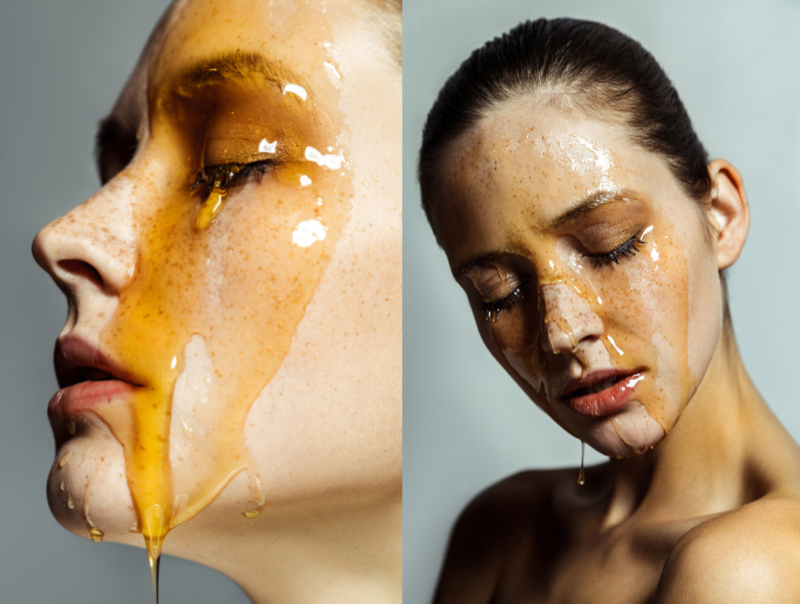acne skincare
How to Use Honey For Acne-Prone Skin
Research suggests that certain types of honey may be beneficial for acne-prone skin by reducing inflammation, hydrating, speeding wound healing, and reducing scarring.

Research suggests that certain types of honey may be beneficial for acne-prone skin by reducing inflammation, hydrating, speeding wound healing, and reducing scarring.
You've probably added honey to tea or food before, but have you ever put it on your face? Research suggests that raw, unpasteurized honey may be beneficial for acne-prone skin.
Honey Benefits for Acne-Prone Skin
- Honey speeds up and supports your skin's natural healing process. In fact, some types of honey, such as medical grade Manuka honey, are used in hospitals and clinical settings to heal burns and wounds. (1) If you (accidentally) pop a pimple, honey may help speed healing. The quicker you can reduce inflammation and heal a wound, the less risk of scarring. (2)
- Honey has antioxidant and anti-inflammatory properties. This is beneficial for acne-prone skin, because acne is an inflammatory condition that is driven by oxidative stress (which antioxidants fight). (3)
- Honey hydrates the skin and keeps it supple. Many acne products work by drying your skin out, which creates two issues: 1) itchy, flaky, skin and 2) overtime, over-drying will cause your skin to produce more oil not less. Honey is a humectant which pulls moisture from the air to your skin, leaving you with plump, hydrated skin. (4)
- Honey has antibacterial properties..but this is not the primary reason honey is beneficial for acne-prone skin. Most people thing acne is caused by bacteria, but that hypothesis was debunked nearly a decade ago. Inflammation causes acne. (5) The bacteria C. acnes (formerly known as P. acnes), has been acne's scapegoat for decades, but it turns out that 1) this bacteria is found on clear healthy skin, in equal amounts as those with acne and is now considered a commensal (good) bacteria (6) 2) you can have acne without having this bacteria on your skin. (7) So, although honey has antibacterial properties, contrary to what many people may think, this is not the primary reason it's beneficial for acne-prone skin. Its anti-inflammatory and antioxidant properties would be most beneficial, while its antibacterial properties are beneficial particularly if you pop something, to prevent an open wound from becoming infected.

How to Use Honey for Acne
As a Cleanser: Wet your face. Apply about 2 teaspoons of honey all over your face and gently massage it in for 2 minutes. Then rinse.
As a Mask: Splash your face with water or a hydrosol so it is damp, then rub about 2-3 teaspoons of honey all over your face, avoiding the eye area. Let it sit for 20 minutes, rinse off, and pat dry. Try this once or twice a week.
Best Type of Honey for Acne-Prone Skin
When using honey for skincare, in order to get the benefits, be sure to use a raw, unpasteurized version of honey (and skip the cute ones in the teddy bear bottle, which are often heated, pasteurized, and sometimes contain added sugar or ingredients).
While any raw, unpasteurized honey should work, the most studied honey for wound repair is Manuka Honey. This is they type of honey most commonly used in hospitals. It comes in many different grades (and price points). The grades are based on something called the Unique Manuka Factor (UMF). It can range from UMF 5+ to UMF 24+. The higher the grade, more antibacterial activity it has.
For the most benefits, as a cleanser or honey face mask for acne, aim for UMF 15+ or higher.
This is our favorite honey for acne, in a an easy to use no-drip squeeze bottle, perfect for keeping on your bathroom vanity.
CITATIONS